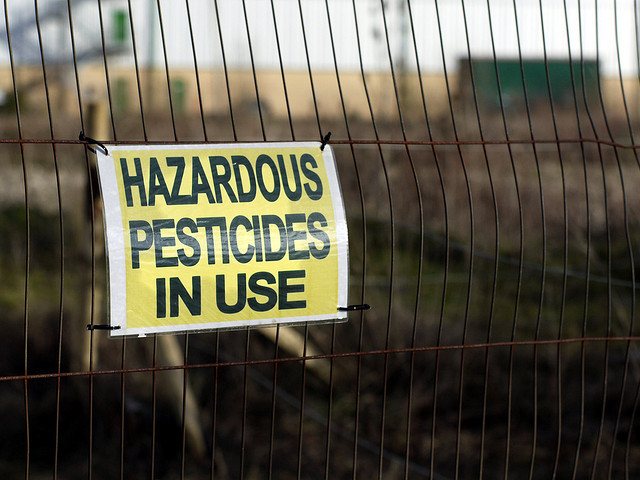Within the U.S., most chemical safety requirements are imposed by the Occupational Safety and Health Administration OSHA) and the Environmental Protection Agency (EPA). For example, OSHA (or delegated state agencies) administers a Process Safety Management (PSM) Standard, while EPA (or delegated state agencies) administers the Accidental Release Prevention (ARP) regulation. In addition to these sets of regulators, however, Congress has created a national agency to conduct independent investigations of major chemical accidents, and to issue accident-specific findings and specific or general recommendations for improved chemical handling and regulation. This agency’s formal name is the Chemical Safety and Hazard Investigation Board—which usually refers to itself as the Chemical Safety Board or CSB.
Audit, Compliance and Risk Blog
Chemical Safety Board Recommends Better Process Safety Management
Posted by Jon Elliott on Mon, Dec 15, 2014
Tags: Corporate Governance, Business & Legal, Health & Safety, OSHA, Environmental risks, Environmental, EPA, Hazcom
Waste Identification Part II: Is My “Solid” “Waste” A “Hazardous Waste”?
Posted by Jon Elliott on Mon, Dec 08, 2014
Federal and state laws govern “hazardous wastes”—the federal law is commonly called RCRA, after the Resource Conservation and Recovery Act of 1976. However, RCRA itself was enacted as an expansion of the prior Solid Waste Disposal Act of 1965, and requirements for both solid and hazardous wastes have been revised many times in recent decades. The US Environmental Protection Agency (EPA) administers these requirements nationally, delegating many provisions to individual states that qualify for authorization to assume regulatory roles.
Tags: Business & Legal, Health & Safety, Environmental risks, Environmental, EHS, Hazcom
Waste Identification Part I: Is My Material A “Solid” “Waste”?
Posted by Jon Elliott on Mon, Dec 01, 2014
Federal and state laws govern “hazardous wastes”—the federal law is commonly called RCRA, after the Resource Conservation and Recovery Act of 1976. However, RCRA itself was enacted as an expansion of the prior Solid Waste Disposal Act (SWDA) of 1965, and requirements for both solid and hazardous wastes have been revised many times in recent decades. The US Environmental Protection Agency (EPA) administers these requirements nationally, delegating many provisions to individual states that qualify for authorization to assume regulatory roles.
Tags: Business & Legal, Health & Safety, Environmental risks, Environmental, EPA, Hazcom, RCRA
STP Launches New Online Gap Analysis Tool
Auditors and Quality Managers across all manufacturing and service industries use ISO and OHSAS standards to put their Environmental and Health and Safety Management Systems into practice. These standards help implement effective and efficient EHS requirements, or VPP Occupational Health and Safety Management Systems. In this blog I review and summarize the two standards, their aims and obligations.
Tags: Corporate Governance, Business & Legal, International, Health & Safety, Environmental risks, Environmental, EHS
Pardon? Did You Say Something About Industrial Noise And Hearing Loss?
Posted by STP Editorial Team on Wed, Nov 12, 2014
Yes, we did. We said that noise, as a by-product of industrial processes, is one of the most pervasive occupational health concerns, contributing to approximately 16% of the disabling hearing loss in adults on a worldwide scale. Ten million people in the U.S. alone have a noise-related hearing loss and twenty-two million workers are exposed to potentially damaging noise each year. In 2007 the National Institute of Occupational Safety and Health (NIOSH) estimated that approximately 23,000 cases of occupational hearing loss were reported as causing hearing impairment and that this alone accounted for 14% of occupational illness that year.
Tags: Corporate Governance, Business & Legal, Employer Best Practices, Health & Safety, OSHA, Employee Rights
New Sustainability Reporting Standards for the Transportation Sector
Posted by Gisela Temmel on Wed, Nov 05, 2014
Tags: Corporate Governance, Business & Legal, Health & Safety, Hazcom, Transportation
In September I blogged about OSHA’s Airborne Contaminant Standard, which sets ambient air limits for over 400 workplace air contaminants to protect employees from exposures to airborne chemical and particulate contaminants in workplace air. In October, OSHA issued an extensive Request for Information (RFI), asking for comments on a variety of approaches to setting these limits in the future. In the RFI, OSHA notes that most exposure limits date from 1971, and so they don’t reflect four decades of advances in understanding of chemical toxicology. OSHA is attempting to build on legal requirements for standard-setting developed by court cases since 1971, and to update—the agency doesn’t say finesse—some of the limitations. The RFI asks over 50 questions, and solicits comments no later than April 8, 2015.
Tags: Corporate Governance, Business & Legal, Health & Safety, OSHA, Environmental risks, Environmental
Effective Traffic Control Management Assures Worker Safety
Posted by STP Editorial Team on Thu, Oct 30, 2014
We drive by the “Be Work Zone Alert” billboards all the time, reminding us to slow down and drive safe through road construction zones, with compassion-provoking reminders like, “Be alert, our mom’s at work.” And indeed, rather than feel annoyed at the roadwork construction that delays our driving progress, let’s continue to be mindful of the real risks that the workers face every day on the job.
Tags: Corporate Governance, Business & Legal, Employer Best Practices, Health & Safety, Training, EHS, Transportation
Reconsidering External Threats From Terrorists and Other Criminals
Posted by Jon Elliott on Tue, Oct 28, 2014
Although most “workplace violence” incidents are low-level psychological or physical altercations between co-workers, Canadians have just been tragically reminded of the dangers of murders by interlopers. Government buildings are the likeliest targets for terrorism, and financial and retail buildings the likeliest targets for non-political criminals, but all workplaces face at least some of these most severe risks. There’s no way to eliminate these risks, but commonsense workplace security measures can reduce them. This note discusses approaches to evaluating and reinforcing security against external threats – which are important subsets of broader workplace violence prevention efforts.
Tags: Corporate Governance, Business & Legal, Employer Best Practices, Health & Safety, Employee Rights, Workplace violence
PHMSA Requires Advance Notice of Construction-Related Events
Posted by Allison Campbell on Mon, Oct 20, 2014
To ensure that operations at gas pipelines, gas pipeline facilities, and LNG plants and facilities are in compliance with a range of conditions, operators of such plants and facilities must provide the US Department of Transportation Pipeline and Hazardous Materials Safety Administration (PHMSA) with 60 days’ advance notice of construction-related events. This advance notice allows time for reviews and inspections to identify any potential compliance issues and avoid costly design changes or delays.
Tags: Corporate Governance, Business & Legal, Health & Safety, Environmental risks, ghg, fracking, hydraulic fracking, Oil & Gas










